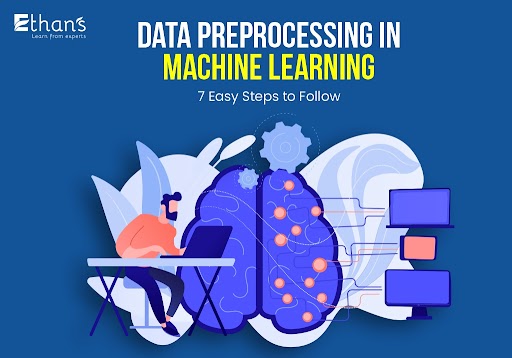Data analytics is an extensive area of expertise. Thus, whether a fresher or experienced professional looking to become a data analyst, you will have to master different subject matters to secure your first data analytics job. One of the first amongst them is learning data preprocessing. Although overvalued, data preprocessing is a domain you can easily enter as the market doesn’t have as many professionals doing it. However, what is data preprocessing, and what will you have to learn to become an employable data preprocessing expert? Let’s see.
What is Data Preprocessing?
Data preprocessing involves evaluating, filtering, manipulating, and encoding data to enable an ML algorithm to comprehend the data and use the outcome. Data preprocessing aims to eliminate concerns like missing values, enhance data quality, and increase the data’s usability for ML.
In other words, data preprocessing provides ML algorithms a base to work by providing relevant data that helps them build an ML model. Whether you build ML models for facial recognition, email automation, product recommendations, healthcare development, etc., you need accurate and clean data. Data processing plays a crucial role in providing data with all the steps involved in it.
Let’s look at those seven steps.
7 Steps in Data Preprocessing
So, here’s what’s involved in data preprocessing.
-
Dataset Acquisition
Dataset acquisition determines the prediction and effectiveness of your LLM or ML model. The better your data quality, the more accurate the model outcome.
-
Libraries Importing
The next step is importing libraries for the ML project. A library refers to a collection of functions an algorithm can call and use. You can streamline data preprocessing with tools and frameworks that simplify organizing and executing the process. Libraries play a significant role in the entire process, as without some libraries, it may take developers hours to code and optimize one-liner solutions.
-
Dataset Importing
Further, you load the data you need for the ML algorithm. It denotes the most crucial step of data preprocessing. You must import the data you’ve collected for further examinations and assessments. Once you load the data, you should check for noisy (data that the machines cannot interpret correctly) and missing content.
Read Full Blog – Why Data Analytics Courses in Pune Stand Out
-
Missing Value Checking
Next, assess the data and search for missing values. These can break actual data trends and may result in extra data loss when the few missing cells in the data lead to the deletion of entire rows and columns. If you find some, you may deal with this concern differently. So, you either remove the whole row with a missing value, or the other way is to estimate the value with the mean, median, or mode. The first approach is a little risky as removing the entire row may lead to the loss of crucial data. Hence, it works only when you deal with a massive dataset.
-
Data Encoding
ML modules cannot understand non-numerical. Hence, to avoid concerns later, you should arrange data numerically. Accordingly, you should convert all text values to numbers or numerical form to make them comprehensible for ML models.
-
Scaling
Scaling helps convert data values into shorter ranges. You can use Rescaling and Standardization for scaling the data.
-
Dataset Distribution
This is where you divide your dataset into training, evaluation, and validation sets. The training set is the data you’ll use to train your ML model. The evaluation set will assess the data and model and the validation set will validate it.
We hope the above helped you understand the significance of data preprocessing and also the steps involved in it. Since data preprocessing lays the foundation for transforming raw data into useful information, your role as a professional would be crucial. However, you must note that data preprocessing is a niche. Hence, you will need reliable machine learning classes in Pune to develop the expertise and tap into the numerous data analyst opportunities.
This is where Ethans steps in. With a competitive course curriculum, abundant practical exposure, and placement assistance, Ethans helps you pave the way for a successful career as a data analyst. Call us +91 95133 92223 and connect with our experts who will help you explore our machine learning courses.




